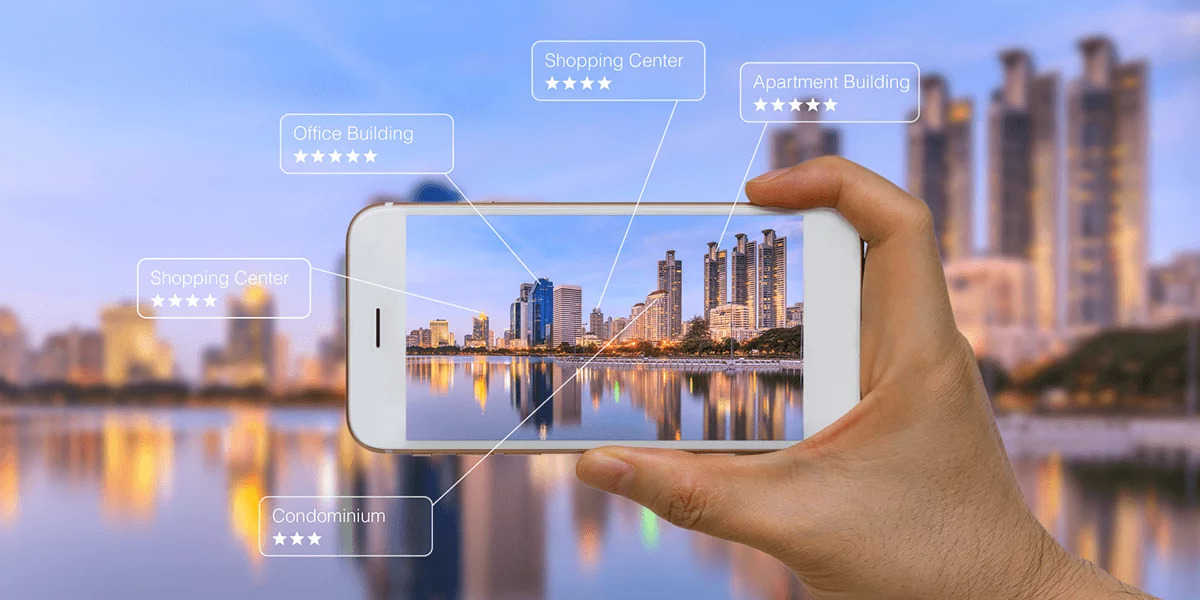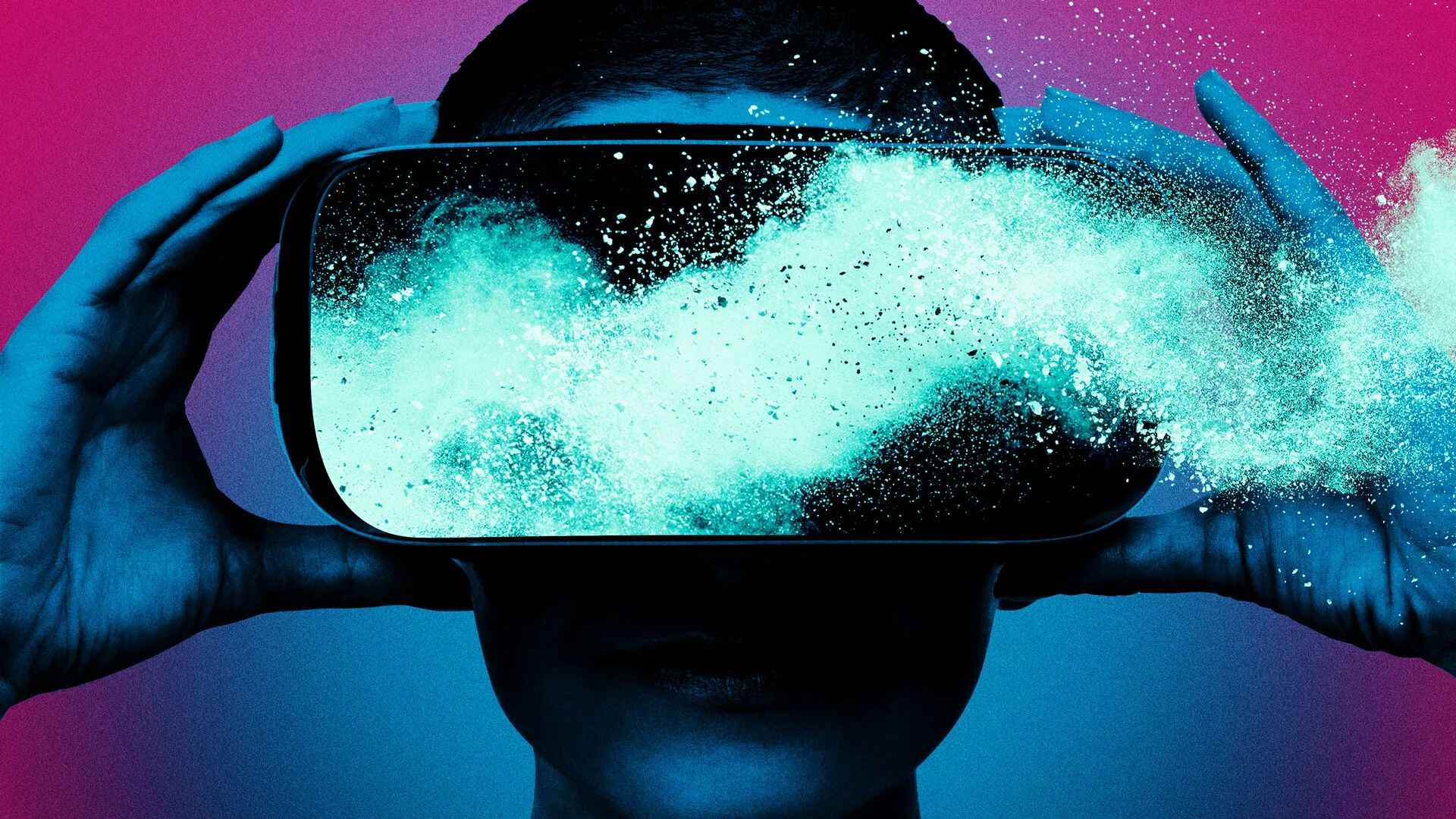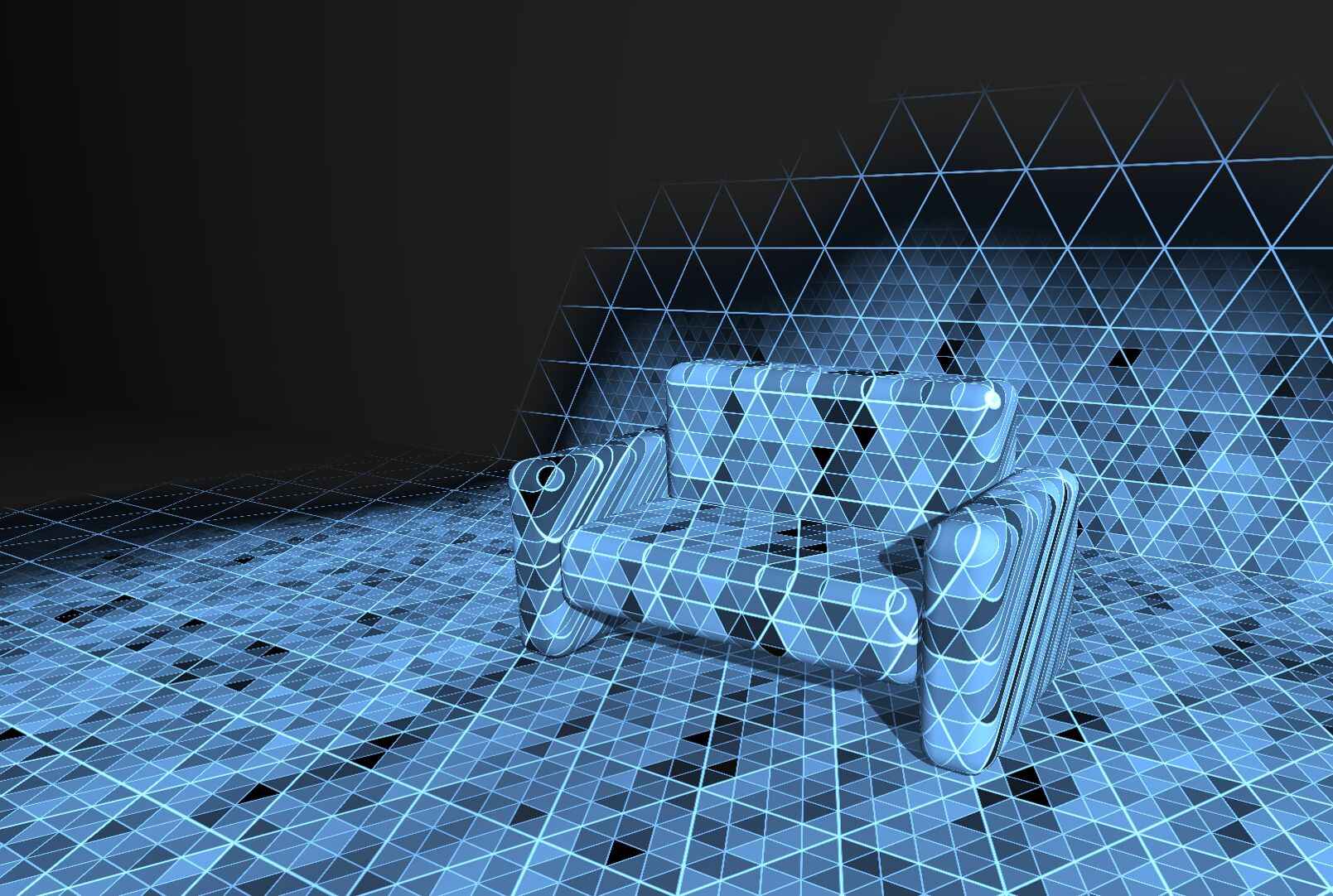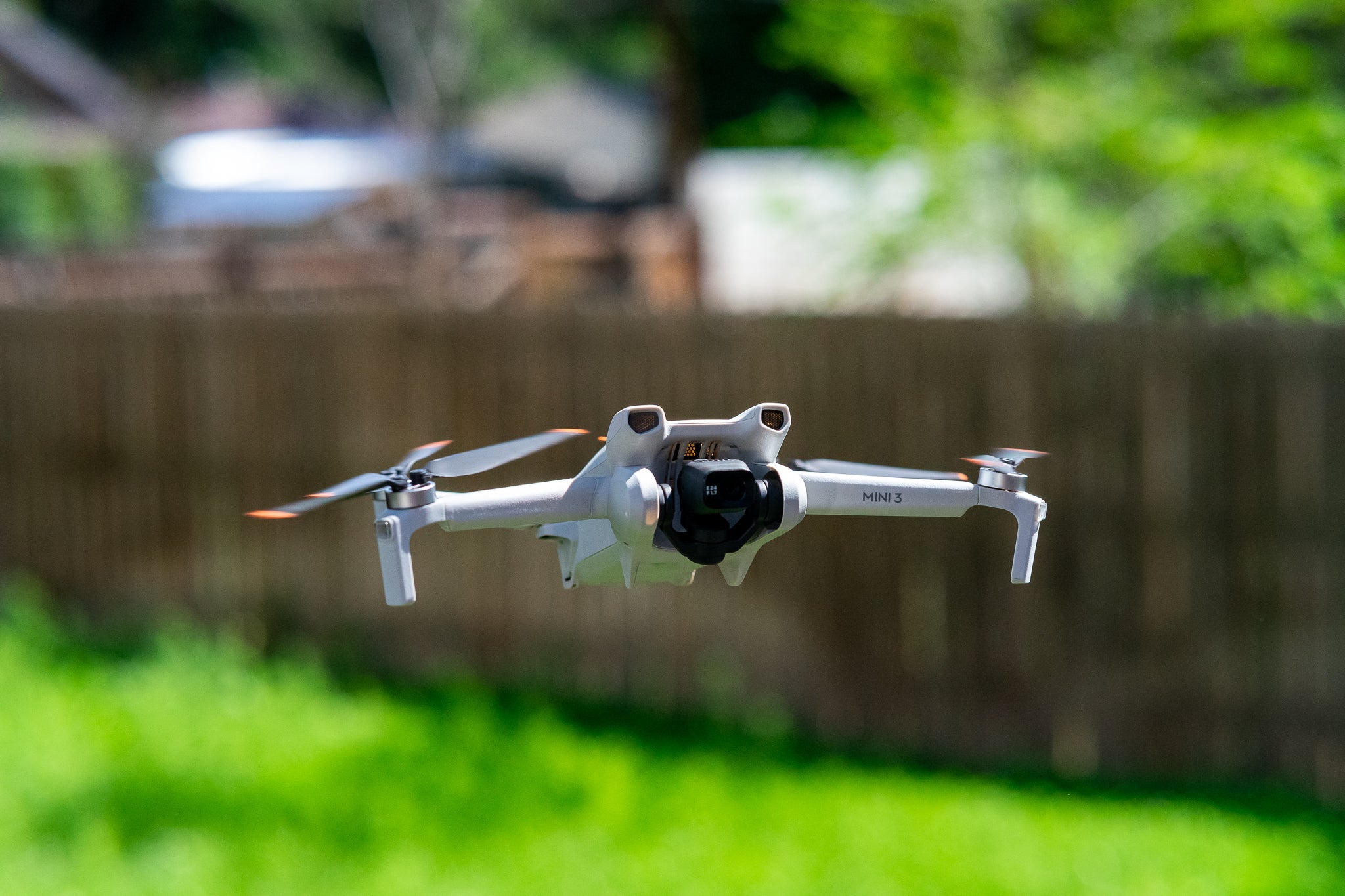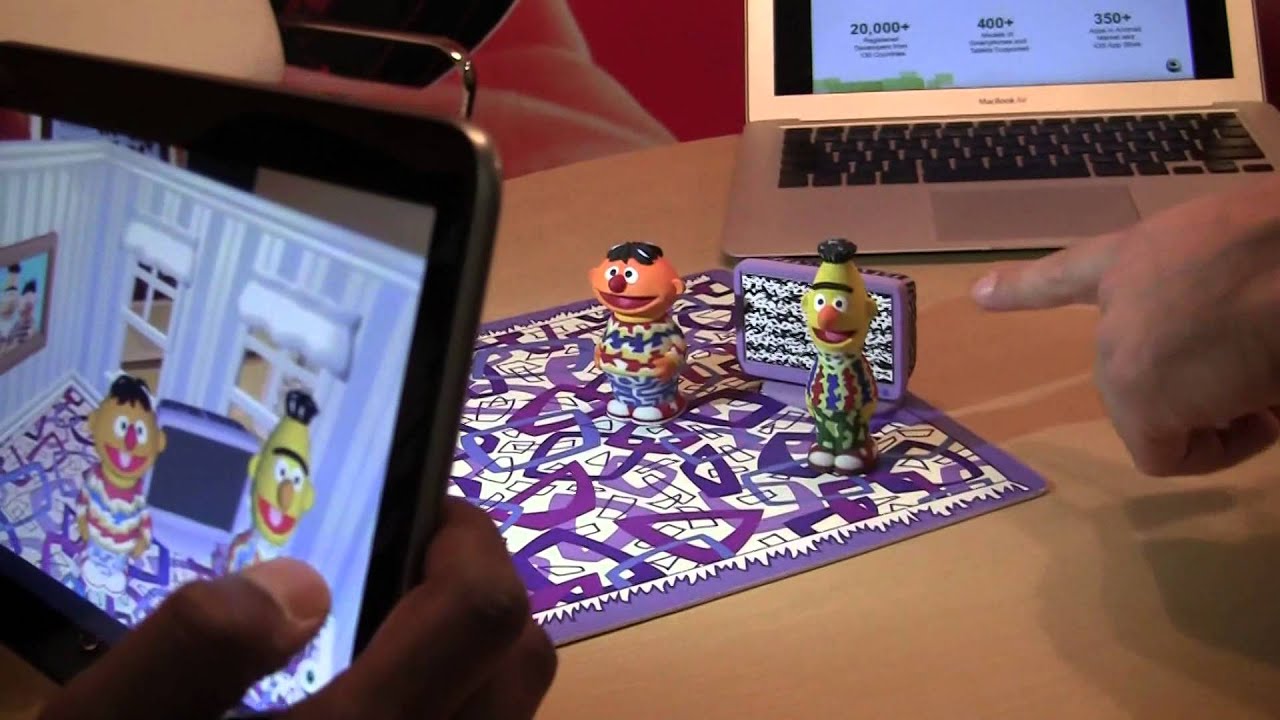Introduction
Welcome to the fascinating world of augmented reality (AR). This cutting-edge technology is revolutionizing the way we interact with the digital world by overlaying virtual elements onto the real world. The concept of AR has gained significant attention and popularity in recent years, offering immersive and interactive experiences across various industries.
Augmented reality refers to the integration of digital content with the user’s real-world environment in real-time. Unlike virtual reality, which creates an entirely artificial environment, AR enhances the perception of the real world by adding computer-generated elements, such as images, videos, or sound, to the user’s view.
The seamless integration of virtual and real-world elements in augmented reality opens up a vast array of possibilities. From gaming and entertainment to education, healthcare, and industrial sectors, AR has the potential to transform the way we live, work, and play.
In this article, we will explore the characteristics, working principles, types of devices, applications, advantages, challenges, and the future implications of augmented reality. Whether you are curious about the technology behind AR or interested in its potential applications, this article will provide you with a comprehensive overview.
So, let’s delve into the world of augmented reality and discover the incredible features that make it such a fascinating and promising technology.
Definition of Augmented Reality
Augmented Reality (AR) is an interactive technology that combines virtual elements with the real-world environment to provide users with an enhanced perception and multi-sensory experience. It overlays computer-generated content onto the user’s view, seamlessly blending the digital and physical worlds.
At its core, AR aims to enrich the user’s perception of reality by superimposing virtual objects, such as images, videos, 3D models, or text, onto the real world. This can be achieved through various devices, including smartphones, tablets, smart glasses, or headsets, which display the augmented content in real-time.
In AR, the user remains connected to the real world while perceiving and interacting with digital content, creating a mixed reality experience. Unlike virtual reality (VR), where the user is completely immersed in a simulated environment, AR enhances the user’s environment by adding virtual elements that complement and enhance their real-world surroundings.
The key characteristic of augmented reality is its ability to seamlessly integrate virtual objects into the user’s physical environment, making them appear as if they exist in the real world. This is achieved through complex technologies, such as computer vision, object tracking, depth sensing, and spatial mapping, which enable AR devices to understand and interact with the user’s surroundings.
Augmented reality can be experienced through various applications, ranging from mobile games and interactive storytelling to industrial simulations and medical training. It has the potential to transform numerous industries, providing valuable solutions, enhancing communication, and offering new ways of interacting with information.
As technology continues to advance, the definition of augmented reality is constantly evolving. New innovations, such as wearable devices, holographic displays, and augmented reality contact lenses, are pushing the boundaries of what is possible in this field. The future of AR holds immense potential for creating immersive and interactive experiences that seamlessly blend the digital and physical worlds.
How Augmented Reality Works
Augmented reality (AR) technology may seem like magic, but it operates through a sophisticated combination of hardware, software, and sensory input. The process of how augmented reality works can be broken down into several key steps:
- Sensing the real world: AR devices use various sensors, such as cameras, GPS, accelerometers, and gyroscopes, to perceive the user’s real-world environment. These sensors gather data about the user’s position, movement, and surroundings.
- Processing the data: Once the sensors capture the necessary information, AR devices employ powerful processors to process and analyze the data. This includes tasks like recognizing images, tracking movement, and mapping the physical space.
- Identifying and tracking objects: AR systems utilize computer vision algorithms to identify and track objects in the real world. This involves analyzing the visual data from the sensors and matching it with pre-defined markers or patterns.
- Overlaying virtual content: Once the AR device has identified and tracked the objects, it superimposes virtual content onto the user’s view. This can include images, videos, 3D models, text, or any other digital elements relevant to the AR experience.
- Aligning and rendering augmented content: The AR system aligns the virtual content with the physical environment in real-time. It takes into account factors such as depth, lighting conditions, and perspective to ensure that the augmented content seamlessly integrates with the real world, making it appear as natural and realistic as possible.
- Displaying and interacting with the augmented content: The final step involves presenting the augmented content to the user through a display device, such as a smartphone screen, smart glasses, or a head-up display. Users can then interact with the virtual elements, manipulate them, or engage with them according to the specific AR application.
It is important to note that the level of immersion and interactivity in augmented reality can vary depending on the device and the application. Some AR experiences may be fully immersive, where the user feels completely surrounded by augmented content, while others may provide a more limited overlay of virtual elements on the periphery of the user’s view.
As technology continues to advance, augmented reality systems are becoming more refined, accurate, and capable of delivering increasingly realistic and interactive experiences. With the integration of artificial intelligence and machine learning, AR is poised to redefine how we perceive and engage with the world around us.
Interaction in Augmented Reality
One of the key features of augmented reality (AR) is its ability to enable interactive experiences that seamlessly blend virtual and real-world elements. The user’s interaction in AR can vary depending on the device and application, but it generally involves several key aspects:
- Gesture-based interactions: AR systems often utilize gesture recognition technology, allowing users to interact with virtual objects through natural hand gestures or movements. This can include gestures such as tapping, swiping, pinching, or waving, which the AR device interprets as commands to manipulate or control the virtual content.
- Touch-based interactions: In many AR applications, users can interact with augmented content by touching the physical screen or surface. This allows them to select virtual objects, move them around, resize them, or trigger specific actions by tapping on them.
- Voice commands: Some AR devices support voice recognition technology, enabling users to interact with augmented content using voice commands. Users can verbally give instructions, ask questions, or initiate actions, which the AR system understands and responds to accordingly.
- Physical movement: Augmented reality often capitalizes on the user’s physical movement and positioning. For example, in AR gaming, users may need to physically walk or run to navigate within the virtual environment or perform certain actions.
- Object interaction: With advances in computer vision and object recognition, AR systems are becoming capable of detecting and interacting with real-world objects. Users can place virtual objects on physical surfaces, such as tables or floors, and interact with them using touch or gesture-based interactions.
- Collaborative interactions: AR has the potential to facilitate collaborative experiences, allowing multiple users to interact with the same augmented content simultaneously. Users can see and interact with shared virtual objects, enabling joint problem-solving, creativity, or social interactions in real-time.
The level of interaction in AR continues to evolve as technology advances. With the integration of advanced sensors, haptic feedback, and other input technologies, the ability to interact with augmented content will become increasingly immersive and seamless.
Interactions in AR can vary from simple and intuitive gestures to complex and intricate movements. Regardless of the specific method, the aim is to provide users with a natural and intuitive way to engage with virtual elements in their real-world environment.
As augmented reality continues to mature, the possibilities for interaction will expand, opening up new avenues for entertainment, education, collaboration, and productivity. The future of AR holds exciting prospects for more immersive, intuitive, and engaging experiences that blur the line between the physical and virtual worlds.
Types of Augmented Reality Devices
Augmented reality (AR) devices come in various forms, each offering unique features and functionalities. These devices enable users to experience augmented reality in different ways and for different purposes. Here are some of the main types of AR devices:
- Smartphones and Tablets: The most common and accessible AR devices are smartphones and tablets. These devices incorporate cameras, sensors, and powerful processors, allowing users to experience AR through apps and games. With the help of the device’s screen, users can see virtual content overlaid on the real world.
- Smart Glasses: Smart glasses, also known as augmented reality glasses, are wearable devices that incorporate a display directly in front of the user’s eyes. These glasses can project virtual content onto the lenses, allowing users to see and interact with augmented elements while still being aware of their surroundings. Examples of smart glasses include Microsoft HoloLens, Google Glass, and Magic Leap One.
- Headsets and Head-mounted Displays (HMDs): Headsets and head-mounted displays are immersive AR devices that completely cover the user’s field of view. These devices typically include a display, sensors, and sometimes even hand controllers. They create a fully immersive augmented reality experience, where users can explore and interact with virtual environments. Notable examples include Oculus Rift, HTC Vive, and PlayStation VR.
- Wearable Devices: Apart from smart glasses, there are other types of wearable devices that incorporate augmented reality technology. These can include AR-enabled watches, wristbands, or jewelry that display relevant information or notifications directly on the user’s body. These devices allow for hands-free interaction and quick access to augmented content.
- Projection Systems: Projection systems use projectors to display augmented content onto physical objects or surfaces. These systems can transform walls, floors, or tables into interactive screens, where users can see and interact with virtual content. Projection systems are often used in industrial settings, retail spaces, or interactive exhibits.
Each type of AR device offers different levels of immersion, interaction, and portability. Some devices are geared towards mobile and on-the-go experiences, while others provide a more immersive and hands-on approach. The choice of device depends on the specific application, user requirements, and the desired level of augmented reality experience.
As technology continues to advance, it is expected that new types of AR devices will emerge, blurring the line between the real and virtual worlds even further. From augmented reality contact lenses to holographic displays, the future holds exciting possibilities for the evolution of AR devices.
Applications of Augmented Reality
Augmented reality (AR) has a wide range of applications across various industries, transforming the way we interact with information, entertainment, education, and more. Here are some of the key areas where AR is being utilized:
- Gaming and Entertainment: AR has revolutionized the gaming industry, bringing virtual objects and characters into the real world. AR gaming apps, such as Pokemon Go, allow users to capture virtual creatures in their own environment. Additionally, AR is being used in interactive storytelling, immersive theater experiences, and virtual reality theme park attractions, offering unique and engaging entertainment options.
- Education and Training: AR is making education more interactive and engaging by providing virtual models, simulations, and visualizations. Students can explore complex concepts through interactive 3D models, visualize historical events, or conduct virtual experiments. In industries such as healthcare and aviation, AR is used for training purposes, simulating real-life scenarios and providing hands-on experiences.
- Architecture and Design: AR is revolutionizing the way architects and designers conceptualize and present their ideas. With AR, they can overlay 3D models of buildings or interior designs onto physical spaces, allowing clients to visualize and interact with the proposed designs. This enables real-time visualization of the final product, aiding in decision-making and reducing design errors.
- Industrial Applications: AR is being utilized in industries such as manufacturing, logistics, and maintenance. AR provides workers with real-time instructions or annotations, guiding them through complex tasks and improving efficiency. It enhances workers’ capabilities by overlaying information, such as product specifications or safety procedures, directly onto their field of view, leading to increased productivity and accuracy.
- Marketing and Advertising: AR is being leveraged by marketers and advertisers to create interactive and immersive experiences for consumers. AR campaigns allow users to virtually try on products, visualize how furniture would look in their homes, or experience virtual tours of real estate properties. AR enhances engagement and drives customer interaction by bringing products and experiences to life.
- Healthcare: AR is transforming the healthcare industry by providing surgeons with real-time visual guidance during surgical procedures. It overlays patient data, such as MRI or CT scan images, onto the surgeon’s field of view, improving precision and reducing the risk of errors. AR is also used in medical education, patient education, and rehabilitation therapy.
These are just a few examples of the wide range of applications for augmented reality. As the technology continues to advance, AR has the potential to revolutionize numerous other industries, including retail, tourism, navigation, art, and more.
With its ability to enhance interaction, visualization, and engagement, augmented reality is unlocking new possibilities and transforming the way we experience and interact with the world around us.
Advantages of Augmented Reality
Augmented reality (AR) offers numerous advantages in various areas of our lives, transforming the way we learn, communicate, and interact with the world. Here are some key advantages of augmented reality:
- Enhanced Learning and Understanding: AR provides an immersive and interactive learning experience, making educational content more engaging and understandable. Visualizing complex concepts through augmented content helps students grasp information more effectively, leading to improved learning outcomes.
- Improved Visualization and Communication: AR enhances communication by enabling users to overlay virtual elements onto the real world. It allows individuals to express ideas, concepts, or instructions in a visual and interactive manner, leading to better understanding and engagement among learners, collaborators, and clients.
- Increase in Efficiency and Productivity: With AR, workers can access real-time information and instructions, enhancing their efficiency and accuracy in completing tasks. AR aids in reducing errors, improving decision-making, and streamlining workflows, leading to increased productivity across industries.
- Enhanced User Experience: AR creates immersive and interactive experiences that blur the line between the virtual and real world. Whether it’s in gaming, entertainment, or marketing, AR offers users a unique and engaging experience that captivates their attention and fosters a deeper connection with the content or product.
- Training and Skill Development: AR enables realistic training simulations, allowing individuals to practice tasks and procedures in a safe and controlled environment. This is particularly valuable in industries such as healthcare, aviation, and manufacturing, where it reduces risks, enhances skill development, and bridges the gap between theory and practice.
- Cost and Time Efficiency: AR can save time and costs in various applications. For example, in remote assistance scenarios, AR can enable experts to provide real-time guidance to on-site workers, eliminating the need for costly travel and reducing downtime. AR can also aid in speedy and accurate product design and prototyping, minimizing development cycles.
These advantages of augmented reality are revolutionizing multiple industries, providing innovative solutions, improving processes, and enhancing user experiences. As the technology continues to advance, we can expect even more enhancements and applications of AR that will further change the way we live, work, and interact with the world around us.
Challenges of Augmented Reality
Although augmented reality (AR) offers numerous benefits, there are also several challenges that need to be addressed for its widespread adoption and seamless integration. Here are some of the key challenges of augmented reality:
- Hardware Limitations: AR experiences require advanced hardware components, such as high-resolution displays, powerful processors, and precise sensors. Developing affordable and accessible AR devices with optimal performance remains a challenge for manufacturers to ensure a smooth and immersive AR experience for users.
- Privacy and Security: As AR evolves, privacy and security concerns become more prominent. AR devices can capture and transmit personal information and location data. It is crucial to establish robust privacy policies, secure data transmission, and ensure user consent to protect individuals’ privacy and prevent potential misuse of personal data.
- Content Creation and Integration: Creating compelling and high-quality AR content requires specialized skills and resources. Designing and integrating virtual elements into the real world convincingly requires a careful balance of visual realism, accurate tracking, and seamless interaction, which can be complex and time-consuming for developers.
- User Experience Design: Designing intuitive and user-friendly AR experiences poses challenges due to the need to consider real-world context, user interactions, and the limitations of both hardware and software. Ensuring that AR applications provide smooth and natural interactions, without overwhelming or disorienting users, requires careful attention to user experience design principles.
- Technical Limitations: AR systems face technical challenges such as accurate object recognition, occlusion handling (overlaying virtual content on real-world objects), and real-time rendering of complex and realistic visualizations. Overcoming these technical limitations is essential to provide users with seamless and reliable AR experiences across different environments and scenarios.
- Acceptance and Cultural Shift: Widespread adoption of AR requires a cultural shift and acceptance of the technology. Education and awareness about AR’s potential and benefits are necessary to overcome skepticism and ensure that users feel comfortable and competent using AR devices and applications.
Addressing these challenges is crucial for the continued development and success of augmented reality. With ongoing advancements in technology, collaboration between stakeholders, and a focus on user-centered design, these challenges can be overcome, making AR more accessible, secure, and integrated into our daily lives.
Future of Augmented Reality
The future of augmented reality (AR) holds immense potential for its continued growth and impact on various aspects of our lives. As technology advances and more industries embrace AR, we can expect to see several developments that will shape the future of this exciting technology:
- Advancements in Hardware: AR hardware will become increasingly sophisticated, compact, and affordable. We can expect to see the integration of AR capabilities into everyday devices such as glasses, contact lenses, and even smart home devices. Smaller and more powerful processors, high-resolution displays, and advanced sensors will further enhance the AR experience.
- Improved User Interfaces: User interfaces for AR will continue to evolve, focusing on providing natural and seamless interactions. This could include advancements in gesture recognition, voice commands, gaze tracking, and haptic feedback. The goal is to make AR experiences more intuitive and effortless, enhancing immersion and usability.
- Enhanced Visual Realism: AR will become more visually realistic, with advancements in computer graphics, rendering techniques, and lighting. The virtual content will blend more seamlessly with the real world, making it difficult to distinguish between what is physical and what is augmented. The use of technologies like ray tracing, real-time mapping, and accurate depth sensing will contribute to more convincing and immersive AR experiences.
- Expanded Applications: AR will continue to expand its applications across various industries beyond gaming and entertainment. Fields such as healthcare, education, architecture, manufacturing, and retail will experience significant advancements in the use of AR. Applications could include advanced medical imaging, immersive educational simulations, collaborative remote assistance, and augmented shopping experiences.
- Cloud-Based AR: Cloud computing will play a significant role in the future of AR. Processing-intensive tasks, such as object recognition or complex rendering, can be offloaded to powerful cloud servers, enabling AR experiences on less powerful devices. This will lead to increased accessibility, improved performance, and reduced hardware requirements for AR applications.
- Augmented Reality in the Workplace: AR will become an integral part of the workplace, enhancing productivity, training, and collaboration. Workers will have access to real-time information, step-by-step instructions, and remote expert assistance through AR devices, improving efficiency and reducing errors. Industrial sectors such as manufacturing, logistics, and maintenance will greatly benefit from AR implementations.
The future of AR also holds possibilities beyond what we can currently envision. As the technology continues to mature, it will undoubtedly unlock new and innovative use cases. The convergence of AR with other emerging technologies, such as artificial intelligence, sensors, and the Internet of Things, will further enhance AR experiences and create new opportunities for seamless integration into our everyday lives.
With its potential to enhance how we learn, work, communicate, and interact with the world, the future of augmented reality is full of promise and excitement.
Conclusion
Augmented reality (AR) is a groundbreaking technology that has the power to transform the way we experience and interact with the world around us. By seamlessly blending virtual elements with our real-world environment, AR offers a plethora of benefits and applications across various industries.
In this article, we explored the characteristics, working principles, types of devices, applications, advantages, challenges, and future implications of augmented reality. We learned that AR enhances our learning experiences, improves visualization and communication, increases efficiency and productivity, and provides unique and engaging user experiences.
However, we also recognized the challenges that need to be addressed for the widespread adoption and seamless integration of AR. These challenges include hardware limitations, privacy and security concerns, content creation and integration, user experience design, technical limitations, and the need for cultural acceptance and shift.
Nevertheless, the future of AR holds immense promise. Advancements in hardware, improved user interfaces, enhanced visual realism, expanded applications, cloud-based AR, and augmented reality in the workplace are just a few of the exciting developments on the horizon.
As technology continues to evolve, it is crucial to foster collaboration between industry players, invest in research and development, and prioritize user-centered design to overcome these challenges and unlock the full potential of augmented reality.
In conclusion, augmented reality has the power to reshape how we learn, work, communicate, and interact with the world in ways we could only imagine. With its wide-ranging applications and transformative capabilities, AR is poised to revolutionize industries, enhance our experiences, and pave the way for a future where the boundaries between the virtual and real worlds become increasingly blurred.







